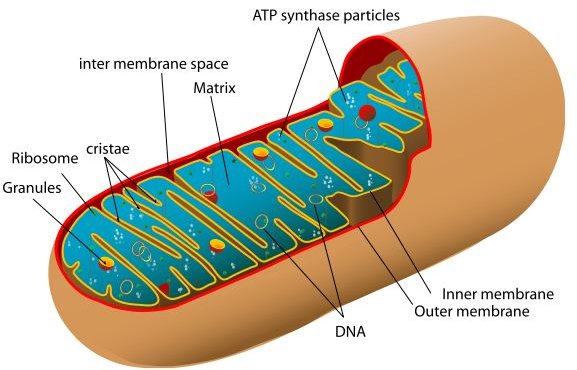Who Discovered the Mitochondria? Many Scientists Were Involved in the Discovery of the Mitochondria Organelle
Discovery of Mitochondria Organelle
There is no real single answer regarding who discovered mitochondria. The process of discovery and identification was a gradual one that has spanned the last century and a half. The first scientists known to identify the existence of mitochondria were working during the mid-1800s. In 1857, Albert von Kölliker described what he called “granules” in the cells of muscles. Other scientists of the era also noticed these “granules” in other cell types.
The discovery of mitochondria in general came in 1886 when Richard Altman, a cytologist, identified the organelles using a dye technique, and dubbed them “bioblasts.” He postulated that the structures were the basic units of cellular activity. Carl Benda, in 1898, coined the term mitochondria. He derived the term from the Greek language for the words thread, mitos, and granule, chondros.
Discovery of Mitochondria Functions
Many more individuals started to work with the organelle over the next few decades, each of whom discovered an important mitochondrial function within the cell.
In 1912, a German biochemist named Otto Heinrich Warburg hypothesized that an enzyme within cells enabled the processing of oxygen. He showed that cyanide had an effect on respiration at the cellular level. Further research was conducted by David Keilin in 1923 to show how the oxidation state within cytochromes (hemoproteins responsible for electron transport) was changed during respiration. He later identified the existence of cytochrome c, part of the inner membrane of mitochondria.
Adenosine triphosphate (ATP), the transporter of chemical energy within cells, was isolated in 1929 by C.H. Fiske and Y. Subbarow. Then, independent studies by H.M. Kalckar and V.A. Belitser showed how the addition of a phosphate to protein aids in cellular respiration in a process called oxidative phosphorylation.
Full discovery of mitochondria continued as the organelle was harvested from the liver, giving scientists greater access to its functions. Eugene Kennedy and Albert Lehninger showed how oxidation occurs within mitochondria in 1950, and by 1978, Nobel Prize-winner Peter D. Mitchell established his theory on chemiosmotics. He described the diffusion of hydrogen ions across membranes, and its relation to ATP during respiration in eukaryotic cells. This helped establish the overall purpose of mitochondria, to work as the organelle that converts the potential energy of food molecules into ATP.
Prof. Paul Boyer, who discovered the mitochondria’s role in ATP synthase (or the combining of adenosine diphosphate and inorganic phosphate to create ATP) won a Nobel Prize in 1997.
Mitochondria Structure
Since the discovery of mitochondria, various scientists have charted its structure. The organelle contains both an outer and inner membrane. The outer membrane is relatively thick with proteins and phospholipids, and allows only small molecules to enter. The inner membrane forms into small folds known as cristae. These allow cytochromes and other molecules to function efficiently within the cell. Inside the inner membrane is a substance known as the matrix, which contains enzymes which cause oxidation, giving the cell the ability to make ATP.
With knowledge of the mitochondria structure, scientists began to isolate the genetic structure of human mitochondrial DNA. During the 1980s and 1990s, discoveries showed the connection between mitochondrial DNA and various diseases now known as mitochondrial myopathies. For example, they found that much of the skeletal and muscle tissue deterioration that occurs comes from maternal DNA and is caused by defective genes.
Image Source
Breakdown of a mitochondrion - (Image credit: LadyofHats at Wikimedia Commons under public domain, https://en.wikipedia.org/wiki/File:Diagram_of_an_animal_mitochondrion.svg)
